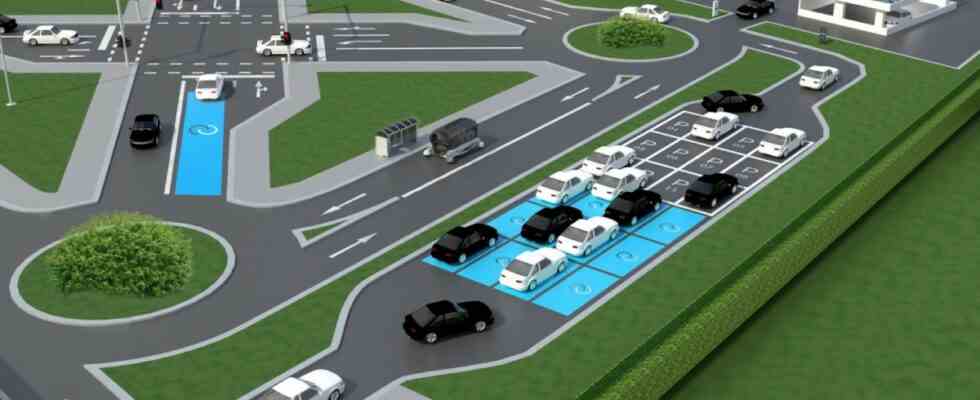A driverless electric car approaches the intersection and comes to a stop at a red light. While it waits, the vehicle is charged using induction. Just as it is about to start rolling, an electric scooter shoots up from the left, and as if that were not enough, a woman with a walker has not yet reached the other side of the street when crossing the street. But the autonomous car recognizes these dangerous situations and reacts correctly: The vehicle waits until pedestrians and e-scooters are safe and only then rolls off – in the direction of a parking deck, where it is automatically steered to the free parking space and charged there without contact.
What sounds like a scenario from the future is set to become reality this year – in Taufkirchen. To be more precise: at the headquarters of Industrieanlagen-Betriebsgesellschaft mbH (IABG), which wants to set up a test field for autonomous driving on an 8,000 square meter area. To this end, the Group is collaborating with the Technical University of Munich (TU), whose chair for traffic engineering is responsible for the scientific management of the project. The “Bavarian Test Field for Intelligent Mobility”, as it is officially called, is funded by the State Ministry of Transport. According to the authority, the investment costs are around four million euros. According to the IABG, it is still unclear what share the Free State will take on.
The plans for the test field have now been presented to the building committee of the Taufkirchner municipal council, which unanimously welcomed the project. “I think it’s great when we have something so innovative on our TIP site,” said Mayor Ullrich Sander (independent). At the beginning he had emphasized that the IABG property in question was in Taufkirchen – presumably knowing full well that the communications from the Technical University and the Ministry of Transport always refer to Ottobrunn.
According to the university, the new test field will be used to “research the transfer of concepts for autonomous driving into practice, especially with a view to the safe interaction of different road users and different systems”. The special thing about the facility is that all car manufacturers and other companies can test new technologies and develop common standards there.
A variable intersection with traffic lights will be in the center of the test field. Here, “complex traffic scenarios involving autonomous and human-controlled vehicles, bicycles and pedestrians are to be experimentally examined,” according to the TU. One focus is on the safety of pedestrians and especially vulnerable road users such as children, the elderly or people in wheelchairs. To test dangerous situations, they can also be integrated into real driving operations as a simulation using augmented reality, explains Wolfgang Mohr, Head of the Innovation Center at IABG.
A 5G bell will be placed over the area
In addition to the crossing, the test field will include two other areas. First, a “parking garage of the future” in which electric cars are handed in, automatically parked, inductively charged and made available again ready for use. Secondly, the plans envisage a “Park & Charge Lane”, such as could be used for car sharing fleets or at taxi stands. Here the electric cars are handed over at the entrance before they drive autonomously to the charging area, where they are charged without contact and then parked. Software coordinates the individual vehicles with each other, so that in the end it is mainly cars with a high charge level that are waiting.
Networking of all road users is essential for such a test field – and thus a robust, broadband mobile network. For this purpose, a “5G bell” is to be placed over the IABG premises, i.e. a mobile network according to the latest standard. Like the crossing, the parking deck and the “Park & Charge Lane”, this will be built in the first construction phase, says Wolfgang Mohr. If all permits are obtained as planned, the work could be completed before winter. In a second construction phase, a simulation center with reception, offices and social rooms is to be built at a later date. In addition, this building will house a high-performance data center for the planned simulations.

